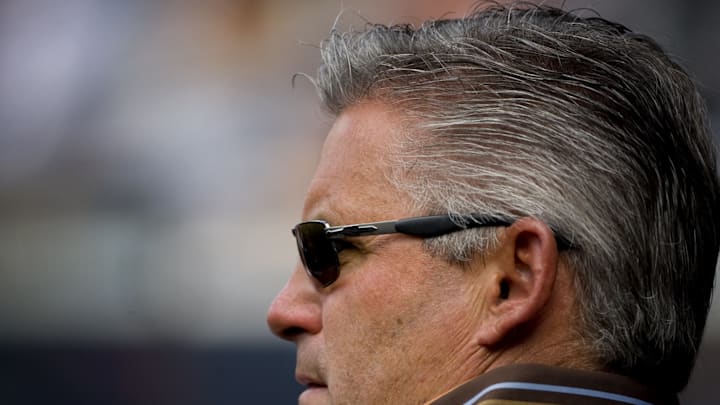
9. Buzzie Bavasi, 1970, +5.3 (10-10-0)
Bavasi was named general manager of the Padres when the franchise was established in 1969. That was just one season after he had been removed as GM of the Los Angeles Dodgers, which he had run since 1951.
That put Bavasi in the extremely anomalous position of being a highly experienced executive running a startup front office. The first season had been a worst-case scenario: the Padres won only 52 games, matching the fellow expansion Montreal Expos for baseball’s worst record.
Having used that 1969 experience to identify what (little) talent the Padres had, Bavasi used 1970 to repair the mistakes and (where possible) supplement the roster.
It was a lot easier to dump the non-productive assets than add productive ones, which is why Bavasi’s grade for 1970 is largely driven by the players he removed rather than the ones he added.
Bavasi traded away five players who produced value for other major league teams in 1970, three of whom improved the Padres to the extent of four games by their departures. Statistically, the most significant was Frank Reberger, a 25-year-old pitcher drafted by Bavasi from the Cubs organization with San Diego’s 22nd pick in the expansion draft.
With the Cubs in 1968, Reberger had made only three token appearances, so 1969 had represented his rookie season. It had gone decently enough to show promise. Used as a reliever, Reberger had appeared in 67 games with a 3.59 ERA.
That made him attractive enough to the San Francisco Giants that after the 1969 season they offered Bavasi three players (Bob Barton, Bobby Etheridge and Ron Herbel) for him.
In San Francisco, however, Reberger was 7-8 with a 5.57 ERA in 45 appearances, 18 of them starts. It amounted to a -2.5 WAA. By 1973, Reberger was released to oblivion.
Etheridge never played a big league game for San Diego, and Herbel (-1.5) lasted only partway through 1970 before being offloaded to the Mets. That left Barton as the significant return. He lasted three seasons as a Padres catcher, playing sparingly behind Johnny Bench in Cincinnati in 1973 before returning to the Padres for a final run in 1974.
Bavasi’s other impactful decision involved walking away from journeyman infielder Roberto Pena, acquired with the 48th expansion draft pick from Philadelphia. In 1969, Pena had been the team’s most-used utility player, spending significant time at all four infield positions. He hit .250 but with no power, and that combined with his age (32), made him expendable.
So prior to the 1970 season Bavasi traded Pena to the Oakland A’s for Ramon Webster, a young hitter of promise. That promise never materialized as Webster batted .125 in 10 games and Bavasi sold him back to the A’s. But the consequential move was the trade of Pena, who ran up a -2.2 WAA for the A’s and the Milwaukee Brewers, to whom he was repackaged in mid-season.
